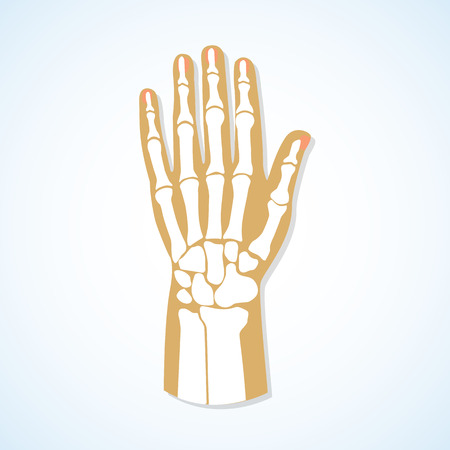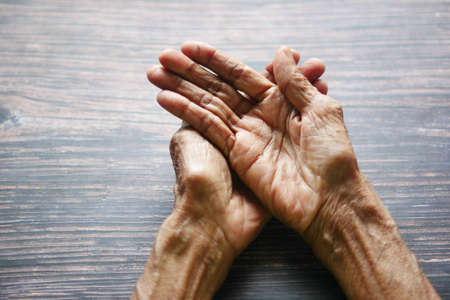1. Introduction to British Palmistry and Finger Shapes
Palmistry, the practice of interpreting the lines and shapes of the hand, has held a unique place in British culture for centuries. Rooted in ancient traditions yet evolving through the Victorian fascination with mysticism and science, palmistry in Britain has become more than a parlour game; it is a living cultural artefact reflecting both folklore and rational inquiry. Among its many facets, the study of finger shapes occupies a special niche, blending anatomical observation with mystical associations that resonate deeply within local customs.
The British approach to palmistry is distinguished by its careful balance between empirical scrutiny and symbolic interpretation. From the stately homes of 19th-century England—where aristocrats would invite professional palmists to entertain guests—to modern village fairs where enthusiasts read palms for charity, this art has continually adapted to social change while maintaining its core principles. In particular, finger shapes have been used not only as markers of personality or destiny but also as tools for social understanding, often referenced in proverbs and everyday conversation. For example, expressions like “long fingers for cleverness” or “square tips for practicality” can be traced back to longstanding beliefs embedded in British oral tradition.
As we delve into the anatomical classifications and mystical meanings attributed to finger shapes, it is essential to contextualise these interpretations within the broader tapestry of British history. The enduring appeal of palmistry in the UK is linked to its capacity to bridge the gap between the scientific curiosity characteristic of the Enlightenment era and the spiritual yearnings that flourished during periods of uncertainty. Thus, exploring finger shapes in British palmistry offers not only insights into individual character but also a window onto the values, hopes, and anxieties of society at large.
2. Anatomical Classifications of Finger Shapes
British palmistry, with its blend of tradition and observation, gives particular importance to the anatomical characteristics of the fingers. The physical attributes of each finger—such as length, thickness, and tapering—are considered fundamental in interpreting an individual’s traits and destiny. Below is a detailed breakdown of the principal finger shape types commonly recognised within British palmistry circles:
Main Finger Shape Types
| Type | Physical Features | Anatomical Distinctions | Common Associations |
|---|---|---|---|
| Conic (Tapered) | Narrow at the tip, gradually widening towards the base | Distinct taper from joint to fingertip, often smooth and elegant in appearance | Sensitivity, adaptability, artistic inclinations |
| Square | Even width from base to tip, flat or squared-off fingertips | Broad joints, strong nail beds, robust build | Practicality, orderliness, logical thinking |
| Spatulate | Wider at the tip than at the base, giving a ‘spade-like’ appearance | Flaring out at the end joint, muscular or fleshy tips | Energy, inventiveness, independence |
| Knotty (Knotted) | Noticeable knuckles or joints; uneven finger surface | Pronounced joint bumps between phalanges; sometimes irregular bone structure visible beneath the skin | Analytical skills, attention to detail, philosophical mindset |
| Psychic (Pointed) | Tapered sharply to a fine tip; slender and delicate overall appearance | Slim profile throughout; minimal muscle mass on distal phalanx | Intuition, idealism, spiritual awareness |
Further Anatomical Considerations in British Palmistry
The classification of finger shapes also takes into account subtle distinctions such as:
- Length relative to palm: Whether fingers are long or short compared to the palm can indicate different personality traits.
- Nail shape: Almond-shaped versus square nails may further refine interpretations.
- Flexibility: Stiff versus supple fingers often suggest contrasting temperaments.
- Knot prominence: Particularly noted in “knotty” types; more pronounced knots are associated with analytical abilities.
A Note on Regional Nuance
It is worth mentioning that British palmists often favour a pragmatic and understated approach to these classifications. While anatomical features form the basis for most analyses, there is room for regional variation—some traditions in Northern England place greater emphasis on joint structure, while those in the South might focus more on finger length and tapering. Regardless of locality, however, anatomical distinctions remain central to reading finger shapes in British palmistry.

3. The Mystical and Symbolic Associations
In British palmistry, finger shapes are not merely anatomical curiosities; they are imbued with centuries of mystical symbolism and folklore. Each finger, with its unique form, has attracted esoteric interpretations that reflect the rich tapestry of UK cultural heritage. The shape and proportions of the fingers are believed to reveal hidden aspects of character, destiny, and even fate itself.
The Index Finger: Authority and Ambition
Traditionally referred to as the “Jupiter finger,” the index finger is often associated with leadership, ambition, and personal power within British palmistry circles. A long, straight index finger is seen as a sign of confidence and a drive for achievement, echoing tales from English folklore where noble heroes possess pronounced Jupiter fingers. Conversely, a short or bent index finger might suggest modesty or hesitancy in taking command.
The Middle Finger: Responsibility and Balance
The middle finger, known as the “Saturn finger,” carries connotations of discipline, responsibility, and sometimes melancholy. In rural British traditions, those with sturdy and well-formed Saturn fingers were thought to be grounded individuals—reliable pillars of their communities. Some folk stories even caution that an unusually long or crooked middle finger might indicate a tendency toward solemnity or an overburdened soul.
The Ring Finger: Creativity and Fortune
Often called the “Apollo finger,” the ring finger is linked to artistry, luck, and romantic inclinations. British palmists have long noted that individuals with prominent Apollo fingers tend to be creative spirits or bearers of good fortune—echoing legends of poets and musicians whose fates were foretold by the length and elegance of this digit. In some regions, a curved ring finger was interpreted as a sign of unrequited love or secret talents.
The Little Finger: Eloquence and Cunning
The “Mercury finger,” or little finger, is traditionally connected with communication skills, wit, and subtlety. British lore often references clever tricksters or silver-tongued negotiators whose quick minds were supposedly revealed by slender, agile Mercury fingers. A short little finger might indicate shyness or difficulties in expressing oneself—a belief still echoed in some modern readings.
Regional Variations in Interpretation
Across the United Kingdom, regional differences colour the interpretation of these mystical associations. For example, Scottish palmists may place greater emphasis on the practical implications of finger shapes for daily life, while English traditions sometimes dwell more on the spiritual consequences. Welsh folklore occasionally ties specific finger formations to ancestral blessings or curses.
Conclusion: Folklore Meets Anatomy
The interplay between anatomical reality and mystical symbolism in British palmistry provides a fascinating insight into how folklore shapes our understanding of self. By examining both physical characteristics and their traditional meanings, practitioners seek to uncover deeper truths about personality and destiny—ensuring that each reading resonates with the enduring spirit of British culture.
4. Finger Shapes in Everyday British Life
In the context of British palmistry, finger shapes are not merely a curiosity for enthusiasts but play a subtle role in shaping social attitudes and everyday interactions. The British, known for their understated wit and attention to character, have long held quiet beliefs about how a person’s fingers might hint at their personality or fate. This section explores how these perceptions permeate daily life, influencing both conscious judgments and unconscious biases.
Perceptions and Social Attitudes
Across the UK, conversations about handshakes, gestures, and even manual dexterity can be tinged with references to finger shape. For instance, it is not uncommon to hear someone described as having “artist’s hands” (often slender and tapering fingers) or “practical hands” (shorter, squarer fingertips). These descriptions often carry unspoken implications regarding trustworthiness, creativity, or reliability—qualities valued differently across regions and social circles.
Influence on Interpersonal Dynamics
Finger shapes subtly inform first impressions in social settings—whether at a village fete in Cornwall or a business meeting in Manchester. Britons may subconsciously interpret finger features as indicators of temperament:
| Finger Shape | Common Perception | Social Implication |
|---|---|---|
| Tapered | Sensitive, artistic | Seen as creative but possibly impractical |
| Square-tipped | Pragmatic, reliable | Trusted with practical tasks or advice |
| Spatulate | Energetic, inventive | Viewed as innovative or unconventional thinkers |
| Pointed | Idealistic, intuitive | Might be considered dreamy or eccentric |
Mystical Associations in Popular Belief
The lore surrounding finger shapes has trickled into British popular culture—sometimes referenced in literature or local folklore. In some rural communities, for example, possessing long ring fingers is jokingly associated with good luck in love or an aptitude for music. Meanwhile, short fingers might elicit playful warnings about impatience or quick tempers. While these ideas are rarely taken seriously in modern Britain, they provide a kind of folk shorthand that colours everyday banter.
This blend of anatomical observation and mystical association continues to influence attitudes towards self-image and interpersonal relationships throughout the UK. Whether used as gentle teasing among friends or as part of more introspective self-assessment, the shapes of our fingers remain a small but enduring part of British cultural identity.
5. Modern Perspectives and Scientific Considerations
In contemporary Britain, palmistry—known colloquially as “cheiromancy”—remains a subject of fascination but is often met with scepticism, particularly when it comes to the anatomical classification of finger shapes and their supposed mystical associations. While traditional British palmistry divides fingers into types such as spatulate, conic, or square, modern attitudes increasingly demand empirical evidence to support such claims.
Scientific Scrutiny and Public Perception
Numerous scientific studies conducted in the UK have investigated whether any correlation exists between finger shapes and personality traits. The consensus among researchers is that there is no statistically significant relationship; finger morphology is primarily determined by genetics rather than by destiny or temperament. This view has been echoed by institutions such as the British Psychological Society, which classifies palmistry as a pseudoscience alongside astrology and tarot reading.
Scepticism in Mainstream Culture
The British publics attitude toward palmistry reflects a blend of curiosity and critical thinking. While palm readers can still be found at fairs, markets, and private consultations, many Britons approach these experiences with a take it with a pinch of salt mentality. Media coverage on the subject often highlights both anecdotal stories and expert opinions that question the validity of linking anatomical features like finger shape to life outcomes.
Evolving Role in Modern Britain
Despite sceptical attitudes, palmistry retains a niche appeal within holistic wellness communities and among those interested in esoteric traditions. Some practitioners reinterpret finger shapes not as rigid predictors but as prompts for self-reflection or personal storytelling. This evolving perspective aligns with the broader British tendency towards pragmatism: even as mystical claims are met with doubt, the practice endures as a cultural artefact and a form of alternative entertainment rather than accepted science.
6. Practical Application: Reading Finger Shapes
Step-by-Step Guide to British Finger Shape Interpretation
Reading finger shapes in British palmistry is as much a craft as it is a tradition, blending anatomical observation with cultural wisdom. Below you’ll find a structured approach to interpreting finger shapes the British way, complete with native terminology and an example reading for context.
Step 1: Initial Observation – “Taking the Measure”
Begin by inviting your subject to rest their hand comfortably on a table or cushion. In British palmistry circles, this step is often called “taking the measure”. Observe the hand’s relaxed state; fingers should not be splayed or tense.
Step 2: Identifying Dominant Finger Type
Examine each finger individually, noting its shape, length relative to others, and overall proportion. Use local descriptors—“spade-shaped”, “pointed”, “square”, or “conic”—which are commonly referenced in British texts. For instance, a “spade-shaped” finger (broad and flat at the tip) may suggest practicality, while a “pointed” tip hints at idealism or creativity.
Step 3: Relating Fingers to Planetary Associations
Each finger carries traditional planetary associations in British palmistry: the index (“Jupiter”), middle (“Saturn”), ring (“Apollo”), and little (“Mercury”). Consider both the finger’s shape and its alignment or curvature. A pronounced Jupiter finger with a square tip may indicate leadership grounded in pragmatism—a classic British archetype.
Step 4: Analysing Phalange Proportions – “The Knuckle Test”
The lengths of each phalange (the three bone sections of each finger) tell their own tale. In Britain, practitioners sometimes refer to this as performing “the knuckle test”. A longer first phalange on the Mercury finger might signal eloquence or wit, valued traits in local lore.
Step 5: Interpreting Local Nuances – “Reading Between the Lines”
Take note of uniquely British interpretations—for example, hands described as “gentleman’s hands” (long, slender fingers with fine joints) are associated with refinement and diplomacy. Likewise, “artisan’s digits” (shorter, broader fingers) denote practicality and industriousness.
Sample Reading Using British Methods
A subject presents with predominantly square-tipped fingers, especially on the Saturn and Apollo fingers. The index (Jupiter) stands slightly apart from the rest—a trait sometimes referred to as having an “independent Jupiter.” According to British palmistry tradition, this combination suggests a pragmatic individual who values order and independence. The separation of Jupiter implies self-reliance, while square tips reinforce reliability—a profile often admired in British society.
Final Thoughts
The practical application of reading finger shapes in British palmistry lies in blending anatomical facts with deep-rooted cultural meanings. With practice and sensitivity to local nuance, you can offer insightful readings that honour both tradition and individuality.

